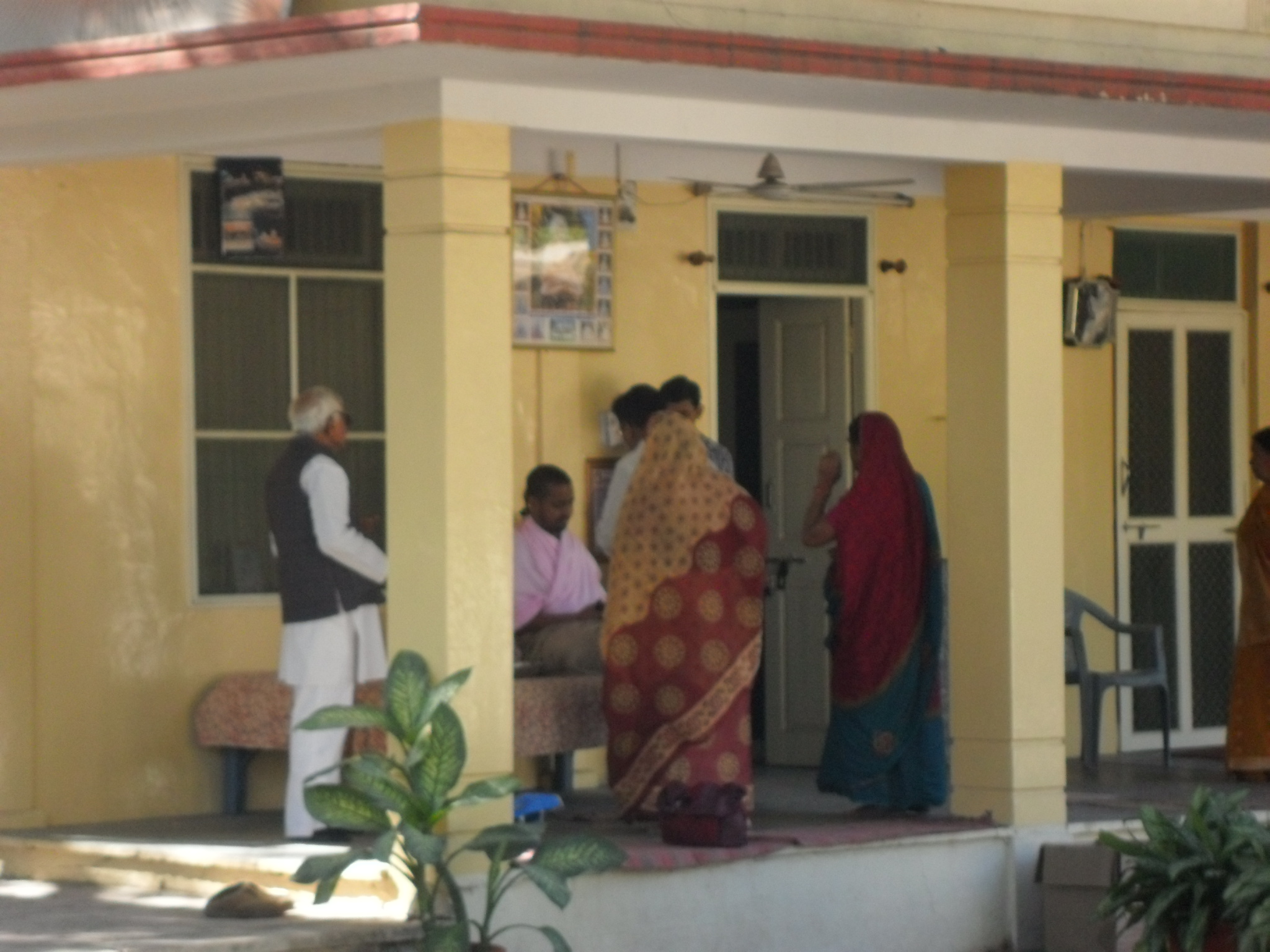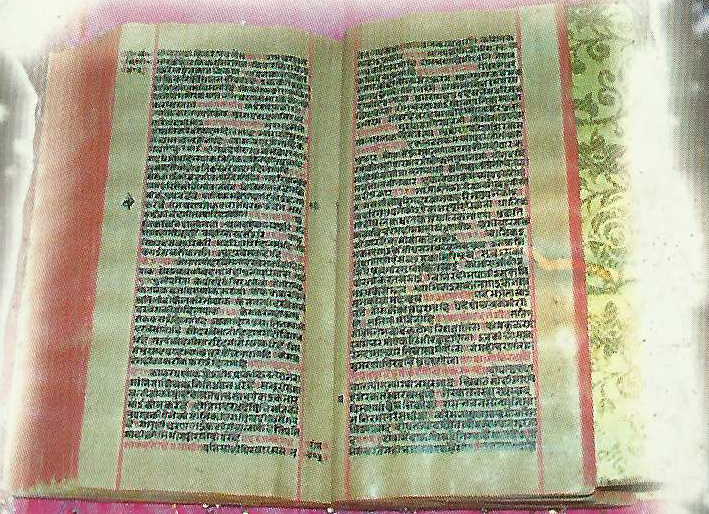|
Ram Jan
Ram Jan was the first acharya of the Ramsnehi Sampradaya, after the foremost guru Ram Charan Maharaj. He formalized the sampradaya on the principles given by his guru. Ram Jan also commissioned the construction of the ''Ram Niwas Dham'', the main Ramdwara, situated at Shahpura, Rajasthan, which is the samadhi of Ram Charan Maharaj. Swami Ram Jan Maharaj was also responsible for editing and collating the poetical-spiritual speeches of Ram Charan Maharaj into the form of a giant book, the ''Vaani Ji''.Ādhunika Hindī sāhitya kī bhūmikā: 1757-1857, Lakshmīsāgara Vārshṇeya, Lokabhāratī Prakāśana, 1966Books(Hindu) Page 195, Hindi Sahitya, Udbhav aur Vikas, Hazariprasad Dwivedi,1952, Rajkamal Prakashan, New DelhGoogle Books(Hindu) See also * Ram Charan Maharaj * Shahpura, Bhilwara * Ram Kishor * Ram Dayal Ram Dayal is the current head of the Ramsnehi Sampradaya (headquarters Shahpura, Bhilwara).Website of Ramsnehi Hospital Dayal was born on 26 September 195 ... [...More Info...] [...Related Items...] OR: [Wikipedia] [Google] [Baidu] |
Acharya
In Indian religions and society, an ''acharya'' (Sanskrit: आचार्य, IAST: ; Pali: ''ācariya'') is a preceptor and expert instructor in matters such as religion, or any other subject. An acharya is a highly learned person with a title affixed to the names of learned subject. The designation has different meanings in Hinduism, Buddhism and secular contexts. ''Acharya'' is sometimes used to address an expert teacher or a scholar in any discipline, e.g.: Bhaskaracharya, the expert mathematician. Etymology The Sanskrit phrase ''Acharam Grahayati Acharam Dadati Iti Va'' means ''Acharya'' (or teacher) is the one who teaches good conduct to one's students. A female teacher is called an ''achāryā,'' and a male teacher's wife is called an ''achāryāni'' In Hinduism In Hinduism, an ''acharya'' is a formal title of a teacher or guru, who has attained a degree in Veda and Vedanga. Prominent acharyas in the Hindu tradition are as given below : *Adi Sankaracharya *Raman ... [...More Info...] [...Related Items...] OR: [Wikipedia] [Google] [Baidu] |
Ramsnehi Sampradaya
Ramdwara (Devanagari रामद्वारा) means "the doorway to the ''Ram''" (i.e., to the name of God). It is a place of worship for the people who believe in Ramsnehi Sampradaya, which advocates chanting of "Ram" (राम).Page 324, Gazetteer of the Bombay Presidency, Ahmedabad Government Central Press 1879 https://archive.org/stream/gazetteerbombay18enthgoog#page/n346/mode/2up Ramsnehi means "People who love God". Their way of worshipping God is simple. People of all faiths, castes, sections etc. visit at the Ramdwaras.Page 24, Spiritual heritage of Rajasthan, Dinesh Chandra Shukla, Books Treasure, 1992 https://books.google.com/books?id=FhscAAAAIAAJ&q=Ramdwara+Shahpura&dq=Ramdwara+Shahpura&hl=en&sa=X&ei=DOUQUsGMH8TqrQfZmYCACQ&ved=0CEsQ6AEwBQPreface, Lakshya Ram Ji Maharaj, "Ram Rahasya Darshan" https://docs.google.com/file/d/0B3bUXrI1MZN1ZjI0WHhnX2s4T3M/edit?usp=sharing This concept of ''Ram'' or ''Rama'' is distinct from the Hindu deity Rama. Origin of Ramsnehi Ra ... [...More Info...] [...Related Items...] OR: [Wikipedia] [Google] [Baidu] |
Ram Charan Maharaj
Ram Charan ( hi, राम चारण) (1720–1799)Page 24, Spiritual heritage of Rajasthan, Dinesh Chandra Shukla, Books Treasure, 1992 https://books.google.com/books?id=FhscAAAAIAAJ&q=Ramdwara+Shahpura&dq=Ramdwara+Shahpura&hl=en&sa=X&ei=DOUQUsGMH8TqrQfZmYCACQ&ved=0CEsQ6AEwBQPreface, Lakshya Ram Ji Maharaj, "Ram Rahasya Darshan" https://docs.google.com/file/d/0B3bUXrI1MZN1ZjI0WHhnX2s4T3M/edit?usp=sharing) is the Rajasthani people, Rajasthani Hindu guru, inspirator of a religious tradition called Ramsnehi Sampradaya or Ramdwara. He initiated and illustrated Nirguna (absolute) Bhakti, although he was not against Saguna brahman, Saguna Bhakti. He initiated and tried to eliminate "show", blind faith, hypocrisy and misled existing in the Hindu religion and preferred to worship the 'name of God', ''Rama'', over God, to not get involved in false "show" activities. Early life Ram Charan was born in Sodha, a village in the Tonk district of Rajasthan on 24 February 1720 (Maagha, M� ... [...More Info...] [...Related Items...] OR: [Wikipedia] [Google] [Baidu] |
Sampradaya
''Sampradaya'' ( sa, सम्प्रदाय; ), in Indian origin religions, namely Hinduism, Buddhism, Jainism, and Sikhism, can be translated as 'tradition', 'spiritual lineage', 'sect', or 'religious system'. To ensure continuity and transmission of dharma, various ''sampradayas'' have the Guru-shishya parampara in which parampara or lineage of successive ''gurus'' (masters) and '' shishyas'' (disciples) serves as a spiritual channel and provides a reliable network of relationships that lends stability to a religious identity. Shramana is vedic term for seeker or shishya. Identification with and followership of ''sampradayas'' is not static, as ''sampradayas'' allows flexibility where one can leave one ''sampradaya'' and enter another or practice religious syncretism by simultaneously following more than one ''sampradaya''. ''Sects of Sikhism, Samparda'' is a punjabi language term, used in Sikhism, for ''sampradayas''. Guru-shishya parampara Sampradayas are liv ... [...More Info...] [...Related Items...] OR: [Wikipedia] [Google] [Baidu] |
Ramdwara
Ramdwara (Devanagari रामद्वारा) means "the doorway to the ''Ram''" (i.e., to the name of God). It is a place of worship for the people who believe in Ramsnehi Sampradaya, which advocates chanting of "Ram" (राम).Page 324, Gazetteer of the Bombay Presidency, Ahmedabad Government Central Press 1879 https://archive.org/stream/gazetteerbombay18enthgoog#page/n346/mode/2up Ramsnehi means "People who love God". Their way of worshipping God is simple. People of all faiths, castes, sections etc. visit at the Ramdwaras.Page 24, Spiritual heritage of Rajasthan, Dinesh Chandra Shukla, Books Treasure, 1992 https://books.google.com/books?id=FhscAAAAIAAJ&q=Ramdwara+Shahpura&dq=Ramdwara+Shahpura&hl=en&sa=X&ei=DOUQUsGMH8TqrQfZmYCACQ&ved=0CEsQ6AEwBQPreface, Lakshya Ram Ji Maharaj, "Ram Rahasya Darshan" https://docs.google.com/file/d/0B3bUXrI1MZN1ZjI0WHhnX2s4T3M/edit?usp=sharing This concept of ''Ram'' or ''Rama'' is distinct from the Hindu deity Rama. Origin of Ramsnehi Ra ... [...More Info...] [...Related Items...] OR: [Wikipedia] [Google] [Baidu] |
Shahpura, Bhilwara
Shahpura is a town, near Bhilwara, city of Bhilwara and tehsil headquarters in Bhilwara district in the India, Indian States and territories of India, state of Rajasthan. Governance Shahpura is a Municipality city in the district of Bhilwara, Rajasthan. The Shahpura city is divided into 35 wards for which elections are held every 5 years. The municipality supplies basic amenities including water and sewerage. It is authorized to build roads and impose property taxes. Demographics In 2011 the Shahpura Municipality had a population of 30,320 of which 15,279 are males and15,041 are females. Children between the ages of 0-6 number 3997 or 13.18% of the total. The female Sex Ratio is of 984 against state average of 928. The child sex ratio is around 929 compared to state average of 888. The literacy rate is 77.84% higher than state average of 66.11%. The male literacy is around 87.47% while female literacy rate is 68.14%. Shahpura municipality hosts 5,671 households. Religi ... [...More Info...] [...Related Items...] OR: [Wikipedia] [Google] [Baidu] |
Rajasthan
Rajasthan (; lit. 'Land of Kings') is a state in northern India. It covers or 10.4 per cent of India's total geographical area. It is the largest Indian state by area and the seventh largest by population. It is on India's northwestern side, where it comprises most of the wide and inhospitable Thar Desert (also known as the Great Indian Desert) and shares a border with the Pakistani provinces of Punjab to the northwest and Sindh to the west, along the Sutlej- Indus River valley. It is bordered by five other Indian states: Punjab to the north; Haryana and Uttar Pradesh to the northeast; Madhya Pradesh to the southeast; and Gujarat to the southwest. Its geographical location is 23.3 to 30.12 North latitude and 69.30 to 78.17 East longitude, with the Tropic of Cancer passing through its southernmost tip. Its major features include the ruins of the Indus Valley civilisation at Kalibangan and Balathal, the Dilwara Temples, a Jain pilgrimage site at Rajasthan's only hi ... [...More Info...] [...Related Items...] OR: [Wikipedia] [Google] [Baidu] |
Samadhi (shrine)
In Hinduism and Sikhism, a samadhi () or samadhi mandir is a temple, shrine, or memorial commemorating the dead (similar to a tomb or mausoleum), which may or may not contain the body of the deceased. Samadhi sites are often built in this way to honour people regarded as saints or gurus in Hindu religious traditions, wherein such souls are said to have passed into ''mahāsamādhi'', or were already in ''samadhi'' (a state of meditative consciousness) at the time of death. In Sikhism, the term "samadhi" is used for the mausoleums of eminent figures, both religious and political. Examples include the Samadhi of Ranjit Singh in Lahore, and that of Maharaja Sher Singh near Lahore. Hindu equivalents are usually called '' chatri'', although those for Maratha Empire figures also often use "samadhi". The forms of structure called "samadhi" vary greatly. The word is sometimes used for a memorial stele, also called paliya, a type of hero stone once common in parts of Gujarat and Sind ... [...More Info...] [...Related Items...] OR: [Wikipedia] [Google] [Baidu] |
Ram Kishor
Ram Kishor was the 13th head of the Ramsnehi Sampradaya (headquarter Shahpura, Bhilwara). Early life and Sannyasa initiation Ram Kishor was born in 1918 at village Dhabar, district Pali, Rajasthan, in a Rajpurohit family to father Bhaironsinghji and mother Kesharbai. At the age of 9, he was initiated into Sannyasa by the Ramsnehi saint Kaaraj Ram at Gangapur, Rajasthan. Thereafter he committed himself to studying the scriptures of the sampradaya, as well as Hindu scriptures. He resided at Ramdwaras of Khurja ( Bulandshahar) and Charkhewalan, Delhi. He was under tutelage of Gyani Ram at the latter place. Philosophy Along with religion and spirituality, his focus was on national issues as well. He participated in the Delhi Shiv Mandir Satyagraha in 1939 and was subsequently jailed for 2 months. He was also an active participant in the Arya Samaj Satyagraha at Hyderabad in 1938. Leadership of Ramsnehi Sampradaya He was designated the head of Ramsnehi Sampradaya on Chaitra ... [...More Info...] [...Related Items...] OR: [Wikipedia] [Google] [Baidu] |
Ram Dayal
Ram Dayal is the current head of the Ramsnehi Sampradaya (headquarters Shahpura, Bhilwara).Website of Ramsnehi Hospital Dayal was born on 26 September 1956 in Indore. He was accepted as a disciple by Bhagatram Ramsnehi (based in Chittorgarh), on Falgun Budi 14, Bikram Samwat 2030. On 20 January 1994, he was elected as the head of the Ramsnehi Sampradaya, by members of the organization, as per the tradition. He succeeded Ramkishor at the position. Excerpts from Ramsnehi Bhaskar the monthly magazine of the The Ramsnehi trust runs the following activ ... [...More Info...] [...Related Items...] OR: [Wikipedia] [Google] [Baidu] |









